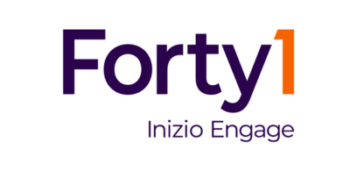LISTEN UP – Why better listening is the key to great employee experiences
 Jason Frank
Jason Frank When it comes to the hairy business of designing and launching new corporate strategies, big change programmes, or major employee initiatives, getting it right relies more than ever on meaningful qualitative employee input. The case for doing more and better employee listening is hard to argue with. Our own research amongst 2,000 US and UK employees in association with YouGov – The Sentiment Monitor 2023 – showed that less than half feel genuinely listened to. Research from The Workforce Institute at UKG, revealed that 74% of employees are more effective in their work when they feel heard.
However, it’s definitely not just about making your people feel heard and valued, listening helps us to discover hidden truths; avoid speculation and risk; highlight knowledge gaps; and create buy-in and ownership. [For more details on the positive psychological and organisational benefits of listening to employees, click here for some useful insights from our behavioural scientists].
So, the question seems to be not whether to do more and better employee listening, but how to do it well in our complex, ever-changing workplaces?
A recent piece from McKinsey entitled: ‘The next competitive advantage in talent: continuous employee listening’ explains the impact of continuous listening in its own business. The authors (people analytics experts) advocate the transformative power of sophisticated people analytics systems. But for most organisations, this is a long way off and arguably, people analytics will never give us the qualitative richness we need to understand why people think, feel and behave in certain ways.
“No man ever listened himself out of a job.” — Calvin Coolidge
8 steps to getting listening right
As employee experience and engagement specialists, organisations come to us with complex employee challenges that need bespoke, targeted insights on particular topics, issues or initiatives – without big investment. The need comes from many directions: HR leaders seeking to remove the risk from redesigning employee experiences; communication leaders looking to engage people in major initiatives; transformation leaders wanting to help people embrace change faster; and a range of leaders wanting to collaborate more extensively with employees to create real buy-in to their programmes.
In these scenarios, annual people survey data tends to be of limited use and pulse survey tools are often quantitative and limited in scope. So, how do we fill the gap? Over the last three years, we’ve learned a lot, so here are 8 steps to getting it right:
1. Provide psychological safety
Perhaps it should go without saying but to ensure that you uncover honest, balanced and meaningful insights, your methods and tools must provide a psychologically safe environment for your people. Your online tools should always empower users to provide ideas and feedback anonymously. With tools such as XLeap, we can provide an environment where as many as 75 people can be heard anonymously and simultaneously, with each voice having equal weight, regardless of seniority, role or personality – which sure beats the old-school focus group.
“The greatest compliment that was ever paid me was when one asked me what I thought, and attended to my answer.” — Henry David Thoreau
2. Think ‘experience’, not just ‘research’
Increasingly, we’re finding that involving employees in research and conversations is not just for insight purposes. Experience and research show that people appreciate being listened to, having a voice and feeling involved in shaping the things that affect them. The same Workforce Institute research as referenced above suggests that employees who are highly engaged are three times more likely to feel heard at work (92%) than highly disengaged employees (30%). So, listening in and of itself is a powerful act of engagement and a powerful weapon in building buy-in to a particular programme from the start.
Using tools like XLeap, we can design sessions that combine quantitative research, qualitative discussion and real co-creation – all in enjoyable, short and dynamic sessions. The research and conversations can also create a sense of community and shared experience, with some participants having the opportunity to opt in to being longer-term collaborators or champions. This was the case in a recent project for one of the world’s leading software businesses, where we involved employees around the world in redesigning the future of career development in their organisation – building an active global community in the process.
“The listening started out being about insight, but it quickly became obvious what a powerful weapon the listening experiences and conversations were in creating engagement, excitement, and a really positive sense amongst our people of being involved in creating solutions that would really work for them.”
Global Marketing Director, Professional Services Leader
3. Be technology-agnostic
Sometimes it’s about good old-fashioned interviews, but successful listening usually requires enabling tech platforms. Rather than being limited by the capabilities of a specific platform, it’s often critical to have access to a range of online tools that enable you to combine different types of employee feedback, conversation, and co-creation to meet your specific needs. We use a combination that includes tools such as Miro, Videoask, Typeform and XLeap to enable us to create exactly the right insights and conversations.
4. Be open-minded
There’s a danger that you won’t uncover the ‘killer’ hidden truths if you’re not open to challenging some long-standing assumptions as part of your research. This was the case in our work with a sustainability team that had been struggling to change a culture of internal travel in a global pharmaceutical company. We managed to make a breakthrough by questioning the long-held assumption that changing travel culture was really a sustainability issue in the minds of their workforce. The research revealed that it wasn’t, and the impact of the resulting change programme was a 52% reduction in travel, with huge carbon emissions and financial savings.
5. Not just research – Employee research
To ensure that the off-the-shelf research tools are set up to provide you with the meaningful employee insights you need, you’ll also need specialist expertise in employee audiences to design the research and conversations in the right way, and to translate them into actionable insights and advice.
6. Qual trumps Quant
Ensure that you use a mix of quantitative and qualitative research methods and tools to enable you to meet diverse insight and engagement needs. However, in order to uncover the more nuanced, rich, human insights we need to inform our decisions and ideas, we find that qualitative conversations work best. They allow people to speak openly about their experiences, providing personal and practical details that can help you to unlock a tricky challenge. They also provide a more rewarding participative experience for your people.
7. Bring the science
With the stakes and expectations high, we find it increasingly valuable to call on the expertise of our behavioural scientists to make sure that we ask the right questions and design the right interactive experiences, in the right way. It pays to apply scientific rigour when we’re seeking to understand something as complex as human attitudes and behaviour.
8. Walk the talk
At the risk of stating the obvious, the engagement impact of the research increases when you share your findings with the participants. And of course, it’s all ultimately about the punchline – acting on what you’ve heard.
With the array of tools now available, dramatically upping your game in terms of employee listening doesn’t have to be complicated, time-consuming or expensive. The time for employee listening to help us all minimise risk and create a more positive impact on our workforces is truly here.
Next Article
 Luke-Matthew Iveson
Luke-Matthew Iveson
The three “As” of Affinity movements: how to be a year-round platform for DEI
While many organizations take pride in celebrating their business achievements, there’s a growing need to invest...
Read more Rani Khalon
Rani Khalon
Affinity Celebrations: How You Get Involved
How do we keep our people passionate about the causes we commemorate and ensure they make a positive difference? In the...
Read more Laura Hunt
Laura Hunt
Affinity Celebration Series: What you should know
Affinity celebrations often serve as a moment in time for us to come together, honour diverse histories and celebrate...
Read more